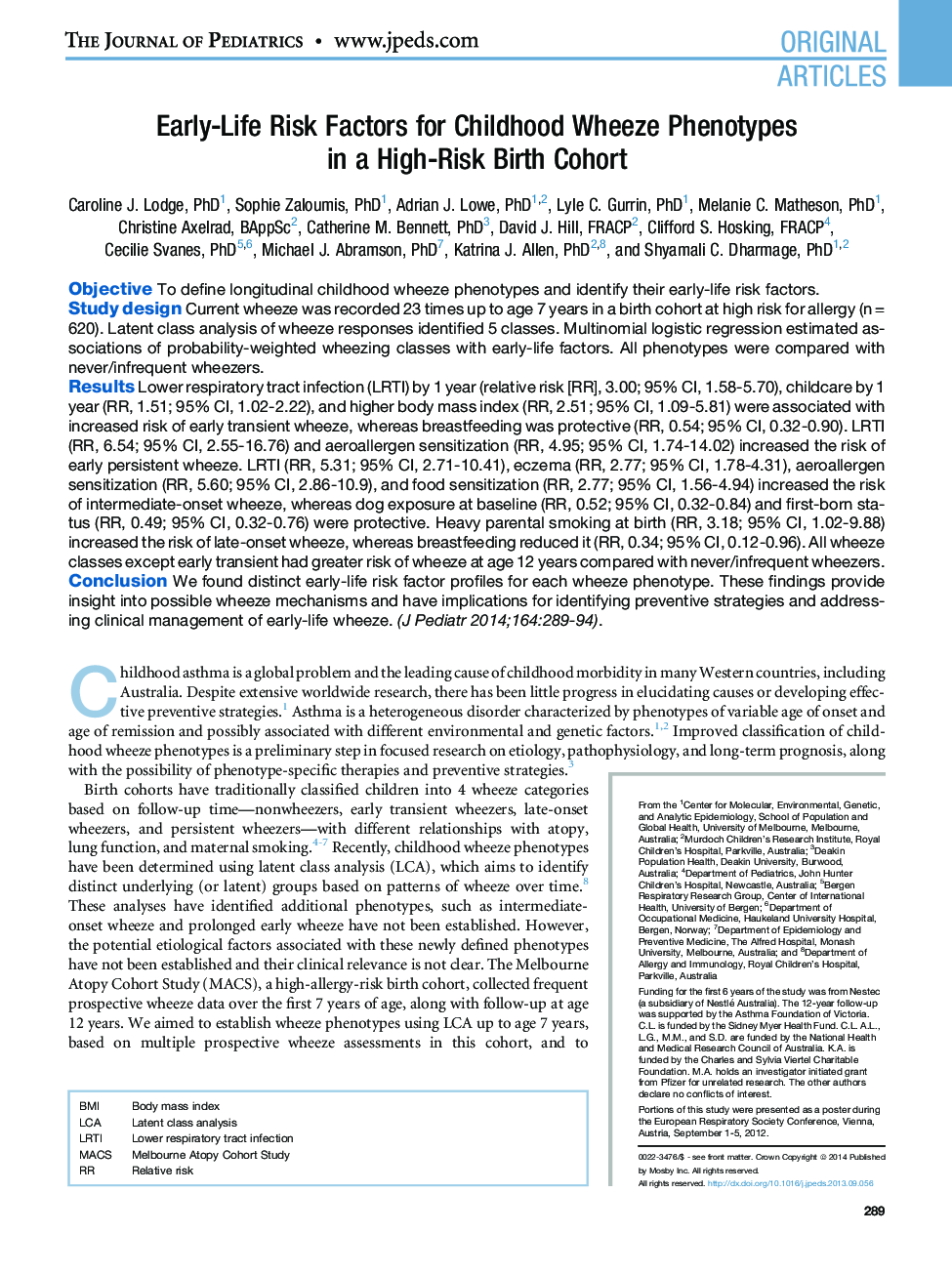| کد مقاله | کد نشریه | سال انتشار | مقاله انگلیسی | نسخه تمام متن |
|---|---|---|---|---|
| 6221882 | 1607459 | 2014 | 8 صفحه PDF | دانلود رایگان |
ObjectiveTo define longitudinal childhood wheeze phenotypes and identify their early-life risk factors.Study designCurrent wheeze was recorded 23 times up to age 7 years in a birth cohort at high risk for allergy (n = 620). Latent class analysis of wheeze responses identified 5 classes. Multinomial logistic regression estimated associations of probability-weighted wheezing classes with early-life factors. All phenotypes were compared with never/infrequent wheezers.ResultsLower respiratory tract infection (LRTI) by 1 year (relative risk [RR], 3.00; 95% CI, 1.58-5.70), childcare by 1 year (RR, 1.51; 95% CI, 1.02-2.22), and higher body mass index (RR, 2.51; 95% CI, 1.09-5.81) were associated with increased risk of early transient wheeze, whereas breastfeeding was protective (RR, 0.54; 95% CI, 0.32-0.90). LRTI (RR, 6.54; 95% CI, 2.55-16.76) and aeroallergen sensitization (RR, 4.95; 95% CI, 1.74-14.02) increased the risk of early persistent wheeze. LRTI (RR, 5.31; 95% CI, 2.71-10.41), eczema (RR, 2.77; 95% CI, 1.78-4.31), aeroallergen sensitization (RR, 5.60; 95% CI, 2.86-10.9), and food sensitization (RR, 2.77; 95% CI, 1.56-4.94) increased the risk of intermediate-onset wheeze, whereas dog exposure at baseline (RR, 0.52; 95% CI, 0.32-0.84) and first-born status (RR, 0.49; 95% CI, 0.32-0.76) were protective. Heavy parental smoking at birth (RR, 3.18; 95% CI, 1.02-9.88) increased the risk of late-onset wheeze, whereas breastfeeding reduced it (RR, 0.34; 95% CI, 0.12-0.96). All wheeze classes except early transient had greater risk of wheeze at age 12 years compared with never/infrequent wheezers.ConclusionWe found distinct early-life risk factor profiles for each wheeze phenotype. These findings provide insight into possible wheeze mechanisms and have implications for identifying preventive strategies and addressing clinical management of early-life wheeze.
Journal: The Journal of Pediatrics - Volume 164, Issue 2, February 2014, Pages 289-294.e2
